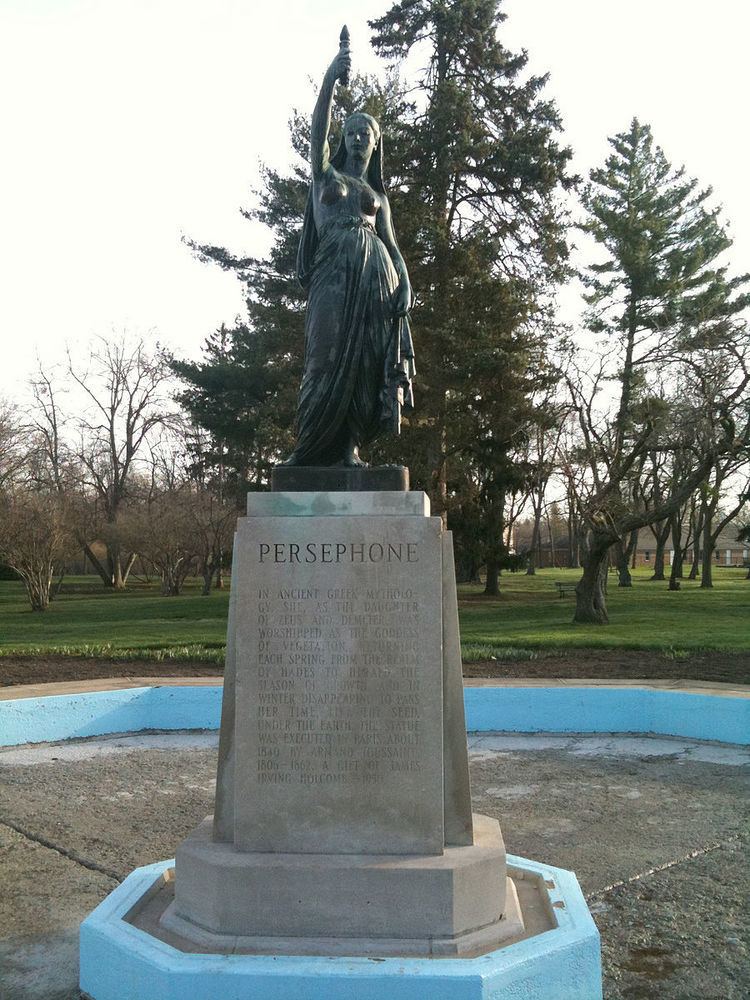Year ca. 1840 (1840) | ||
 | ||
Dimensions 160 cm × 56 cm × 41 cm (63 in × 22 in × 16 in) Location Butler University, Indianapolis, Indiana, United States | ||
Persephone is an outdoor sculpture by artist Armand Toussaint created ca. 1840. The work sits within the center of a pool in Holcomb Gardens on the grounds of Butler University in Indianapolis, Indiana, United States. The sculpture depicts the Greek goddess Persephone. In 1993 the sculpture was examined by the Save Outdoor Sculpture! program produced by the Smithsonian Institution.
Contents
Description
Persephone depicts the Greek goddess Persephone standing on a limestone base in the center of a concrete octagonal pool. The bronze female figure is draped from the waist down. Her left hand is raised and holds a lit torch of bundled twigs. An inscription on the statue base reads on the left statue base:
AD TOUSSAINTSCULPTEURThe right side of the base is inscribed:
GRAUX-MARLYFABT DE BRONZESThe front of the base is inscribed just before a 1950 founders mark:
PERSEPHONEIN ANCIENT GREEK MYTHOLO-GY, SHE, AS THE DAUGHTEROF ZEUS AND DEMETER, WASWORSHIPPED AS THE GODDESSOF VEGETATION, RETURNINGEACH SPRING FROM THE REALMOF HADES TO HERALD THESEASON OF GROWTH, AND INWINTER DISAPPEARING TO PASSHER TIME, LIKE THE SEED,UNDER THE EARTH. THE STATUEWAS EXECUTED IN PARIS ABOUT1840 BY ARMAND TOUSSAINT,1806-1862. A GIFT OF JAMESIRVING HOLCOMBAcquisition
The sculpture was made in France and was originally located at the Swift estate in Chicago, Illinois. It was purchased by J. I. Holcomb in 1950 and installed at the gardens.
Creation
The piece, made in France, was created primarily crafted by sculptor Armand Toussaint and cast by Graux-Marly. Upon its placement at Holcomb Gardens, the landscapers were J.I. Holcomb and Arthur Lindberg.
Condition
In 1993 Persephone was surveyed for the Save Outdoor Sculpture! survey on behalf of the Smithsonian Institution. The condition of the sculpture, at that time, was described as "treatment needed."
Information
The sculpture of the Greek goddess is meant to represent Persephone coming back from the underworld every spring to make the flowers and plants bloom. In Fall 2011 a mural in the Johnson Room in Robertson Hall on the Butler campus was created. The 2,120 square-foot mural depicts notable landmarks at Butler, including Persephone.
